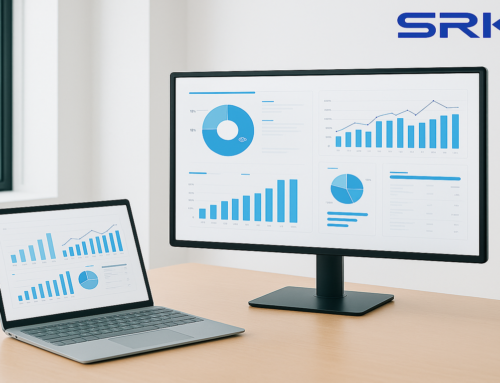
“Why Automation is the Way Forward for SMEs”
There is the popular saying that “necessity is the mother of invention”.
One of the most notable automation processes was the introduction of the automated teller machine (ATM) in the 1960s, which is still prevalent to this very day. Gone are the days of long queues of people looking to withdraw, cash cheques or bank in money. Today, ATMs give people access to cold hard cash from anywhere at any time.
However, when it was first introduced and became widespread, many feared there would no longer be a need for bank tellers.
But banks quickly realised that automation allowed them to open more branches yet keep to strict levels of efficiency and productivity. This allowed bank tellers to carry out higher-level tasks such as handling the operations of the branches, customer relations and support, selling specialised products and services etc.
Since then, automation has moved into the digital realm with “digital workers” or “robots” conducting repetitive, time-consuming tasks such as invoicing, registration, data management and many others.
The Unstoppable Force of Automation
As automation serves to increase productivity and output, it will be impossible for businesses to ignore the Fourth Industrial Revolution (4IR).
Deloitte pointed out that while automation will be disruptive, making many jobs redundant, however, it will also create more highly skilled and technical jobs which is an advantage to individuals and businesses who can adapt to automation.
Hence, the reskilling and upskilling of employees and individuals for roles that demand digital knowledge will be key for businesses to stay relevant.
Covid-19 certainly exposed the vulnerability of many small and medium enterprises (SMEs) in Southeast Asia (SEA) that were trailing behind the digital curve and lacking automation technology.
Some would think that the situation would have expedited the adoption of technology but as many sources have reported, SMEs simply lacked the know-how to make the transition. Tightened budgets from slow revenue would also have planted doubts that their businesses would be able to survive even if they did take that leap of faith.
But with businesses starting to regain some normalcy, SMEs will want to start budgeting digital transformation solutions as part of their annual expenses to prepare for any future surprises.
Basic Types of Automation
For early adopters of automation technology, Robotic Process Automation (RPA) will be the most basic and cost-effective solution to begin with as it can start working for your business within days.
By using software to develop “bots” or “digital workers”, repetitive and time-consuming digital tasks can be carried out automatically without any human oversight and with greater accuracy. Saving hours and allowing your staff to focus on more critical jobs.
Some practical applications in the retail industry would be inventory, invoicing, sales analysis, return orders and customer support.
SMEs can then move on to Business Process Automation (BPA) which is focused on optimising the end-to-end operations of the entire organization, across all departments.
This is usually done by integrating software technology or cloud services that can link existing systems within the organisation for greater collaboration and workflow between departments.
With BPA, high-priority tasks that require multiple levels of approval and collaboration across different departments can be streamlined within hours. Through cloud technology, flow of information is a breeze as all departments have instant access from anywhere at any time.
The Impact of Automation
There are multiple instances of RPA adoption in businesses.
A glaring example was when we presented a solution to gather information from prospective customers nationwide for a large F&B company in Malaysia. Before, the salesperson would have to spend hours of travelling time and mileage cost to gather confidential details and information on paper. This would create a delay between the customer request and execution of service. The process proved to be slow and resulted in many lost prospects.
By utilising a range of Microsoft powered solutions, a mobile app was created where customers could key in their details which would then be stored on a cloud before Power Automate processes the requests in the back end. With spot-on accuracy and reliability in data collection coupled with accelerated service, the distribution firm received rave reviews from its customers and its salespeople which provided a 100% boost in sales when compared to the manual process.
Again, with Power Automate, our SRKK team helped a logistic company to perform the daily repetitive task of extracting data from legacy systems (outdated computing software) to send out emails to the relevant persons. Initially this task required a dedicated full-time personnel, but with RPA it could be done automatically without any human errors, better coordination whlist saving hours of time and costs for all parties.
To have a look at how RPA has left its imprint in Asia Pacific, the city of Kobe, Japan is a powerful representation. 3 real-world examples of the impact and scale of low-code automation | Power Automate Blog (microsoft.com)
With the city’s 1.5 million population inquiring on the status of their special subsidy when Covid-19 hit the city, Microsoft Power Automate, allowed citizens to call in and enter their application number. The bot would then process the request before triggering an automated response to the caller. The incoming call volume was drastically reduced from 40,000 to 4,000 calls daily, all with a simple solution.
With such clear-cut cases of how RPA can impact business operations, the possibilities for SMEs looking to expand their reach either locally or internationally are endless. One can see why the 4IR must be embraced by businesses to stay competitive in the future.
Further Benefits of Automation
With automation, routine tasks like gathering invoices, logging them down in a spreadsheet before sending them out to the relevant people can take hours, but with a digital worker it can be done faster and with higher accuracy. Your employees will experience greater productivity and efficiency as they can perform more tasks that add value to your business be it in customer relations, support etc.
SMEs can also upscale their businesses with greater ease as RPA can extend its support to any extra tasks that come with expansion, providing your business with the flexibility to accommodate growing demands.
Automation also comes with it better workflow, communication and collaboration as the bot can send out notification and alerts of incoming, pending and important tasks.
The 4IR or automation is the future. Today, it has already impacted various industries in healthcare, retail, manufacturing, finance etc. More companies in Asia are slowly embracing the trend.
With the right help, tools and solutions, automating computer solutions can be surprisingly simple and beneficial. If you need a helping hand and want to know how automation can support your business, SRKK has digital transformation consultants that are ever ready to help you kickstart the journey here at RPA Kaizen | SRKK. Alternatively, feel free to contact me here on LinkedIn.

Pam Yew Peng Ping
General Manager of Malaysian Business Applications Consulting (BAC) Solutions Division of SRKK Group
“Believing in the power of automation and cloud solutions, she continues to drive digital transformation for organisations using tools such as Power Automate, Power Apps and SharePoint to help empower businesses and her clients. With 15 years of experience in the IT industry, Pam Yew now heads the Southern Division of SRKK in Malaysia.”
CLICK ICON TO SHARE
Share on facebook
Share on twitter
Share on linkedin
Join the CIO’s Toolbox to get a weekly-valuable-non-intrusive newsletter.
You got my words!



